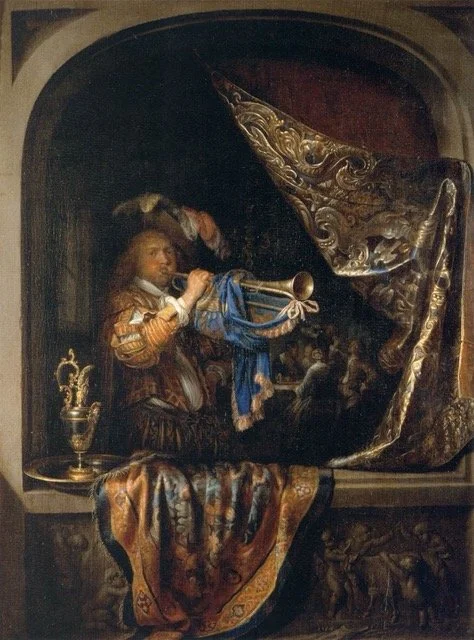Grace Notes
Volume 4
December 2024
THE BAROQUE TRUMPET
DONNA REILLY
When we use the term, Baroque trumpet we’re actually referring to a version of the original natural trumpet that’s been modified to suit today’s players—usually ensembles playing Baroque music on period instruments. The original instrument is long and narrow, and has no valves. It was probably in use as early as the 15th century (some say earlier), mostly as a flamboyant way to announce important occasions.
The natural trumpet was fine for leading soldiers into battle, since only a few notes were necessary, but the instrument was limited to pitches in a natural harmonic series. Without going into complicated detail, the limitations of the natural trumpet made it necessary to score music for two different registers—upper and lower. The lower register, known as the principale, was used for fanfares; the upper, or clarino, was more suited to melodic playing. Playing in the clarino register was a precise skill that only the best musicians were able to master. Pieces were often written with certain players in mind; Bach’s Brandenburg Concerto #2 is one of them.
Today, the original instrument is usually modified to include the addition of small holes, which don’t function like a recorder, but help with minor tonal adjustments. The resulting modification is what we call the Baroque trumpet. The original natural trumpets are considered too fragile to play. But as Kris Kwapis, our soloist, says, “I tend to think the equipment or instrument is the least interesting thing about bringing this music to life. It truly has way more to do with how we can imagine playing the trumpet as a voice.” Kris Kwapis and her Baroque trumpet playing will be featured in UVB’s concerts in both January and April.
The concert trumpets in use today, in addition to the Baroque, are all valved instruments, the most common being the C and Bb trumpets and the piccolo trumpet—a smaller, higher, and brighter-toned instrument.
Sources: Dan Leeman, Notestem; Wikipedia; and Kris Kwapis
GRACE NOTES


